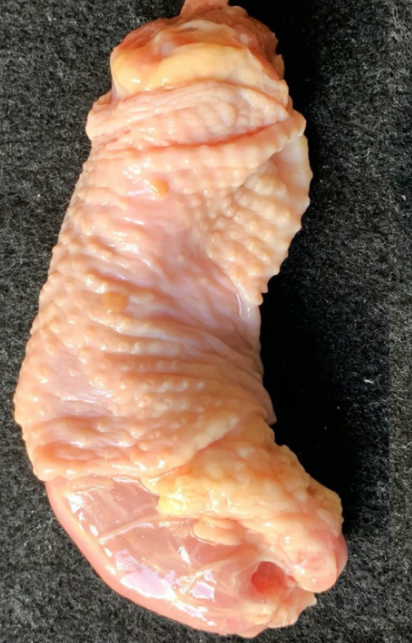Broilers are usually slaughtered in a high-speed automated system that could cause the intestines' rupture during evisceration, resulting in contamination of carcasses with intestinal bacteria like Campylobacter. A study by Moazzami et al. (J Food Prot (2021) 84 (4): 572–578) evaluated the combined effects of ultrasound and steam on naturally contaminated chicken carcasses at a large-scale abattoir in Sweden. Ultrasound ( 30 to 40 kHz) and steam ( 84-85°C or 87-88°C) were used at slaughter, with a line speed of 18,000 birds/ hour. Sampled before and after treatment by ultrasound-steam were analyzed for Campylobacter spp., Enterobacteriaceae, Escherichia coli, and total aerobic bacteria on neck skins. After the ultrasound-steam treatment, the mean reductions in C. jejuni was 0.5 ± 0.8 log CFU/g, in Enterobacteriaceae 0.6 ± 0.6 log CFU/g, in E. coli 0.5 ± 0.6, and total aerobic bacteria 0.4 ± 0.7 log CFU/g. Although the bacterial reductions were significant, large amounts of bacteria remained on the carcasses after treatment. The reduction in counts was lower in this study than in previous studies. @ https://meridian.allenpress.com/jfp/article/84/4/572/447788/Reducing-Campylobacter-jejuni-Enterobacteriaceae
Is the use of ultrasound and steam effective in reducing Campylobacter jejuni, Enterobacteriaceae, Escherichia coli, and Total Aerobic Bacteria on Broiler Carcasses?
Reducing Campylobacter jejuni,Enterobacteriaceae, Escherichia coli, and Total Aerobic Bacteria on Broiler Carcasses Using Combined Ultrasound and Steam | Journal of Food Protection
No comments

